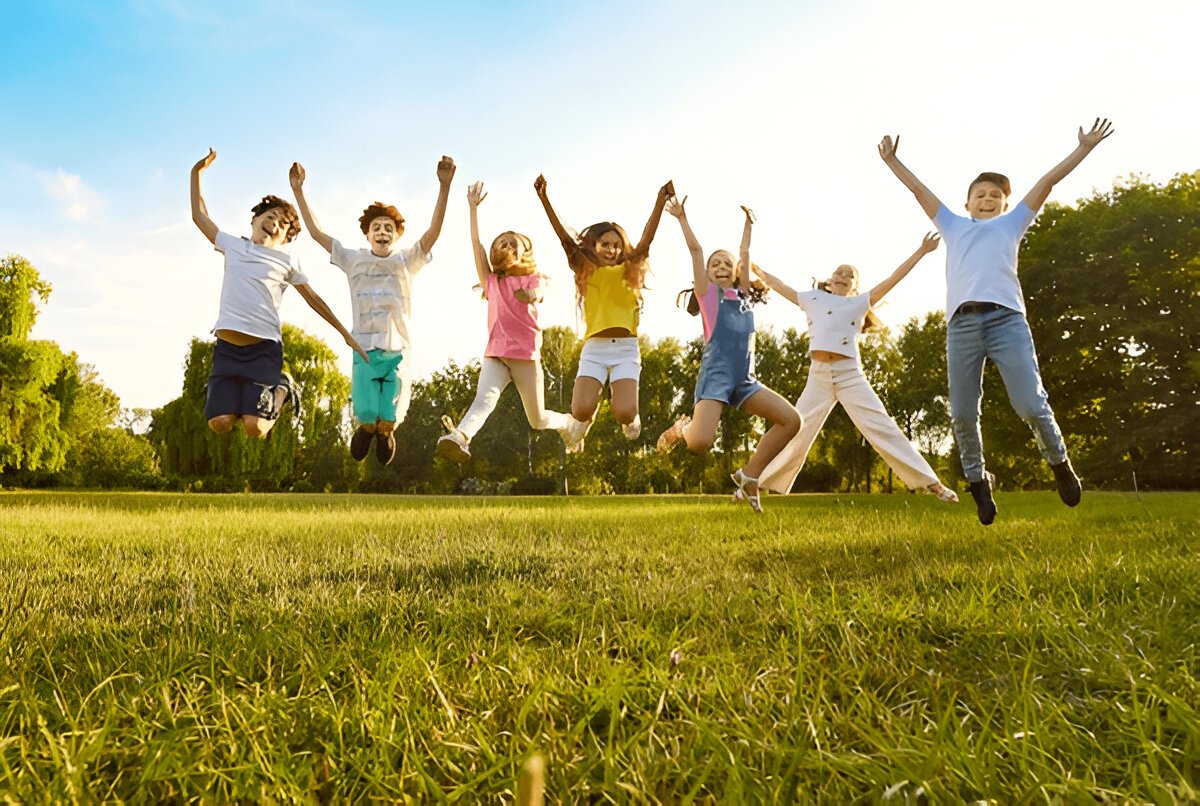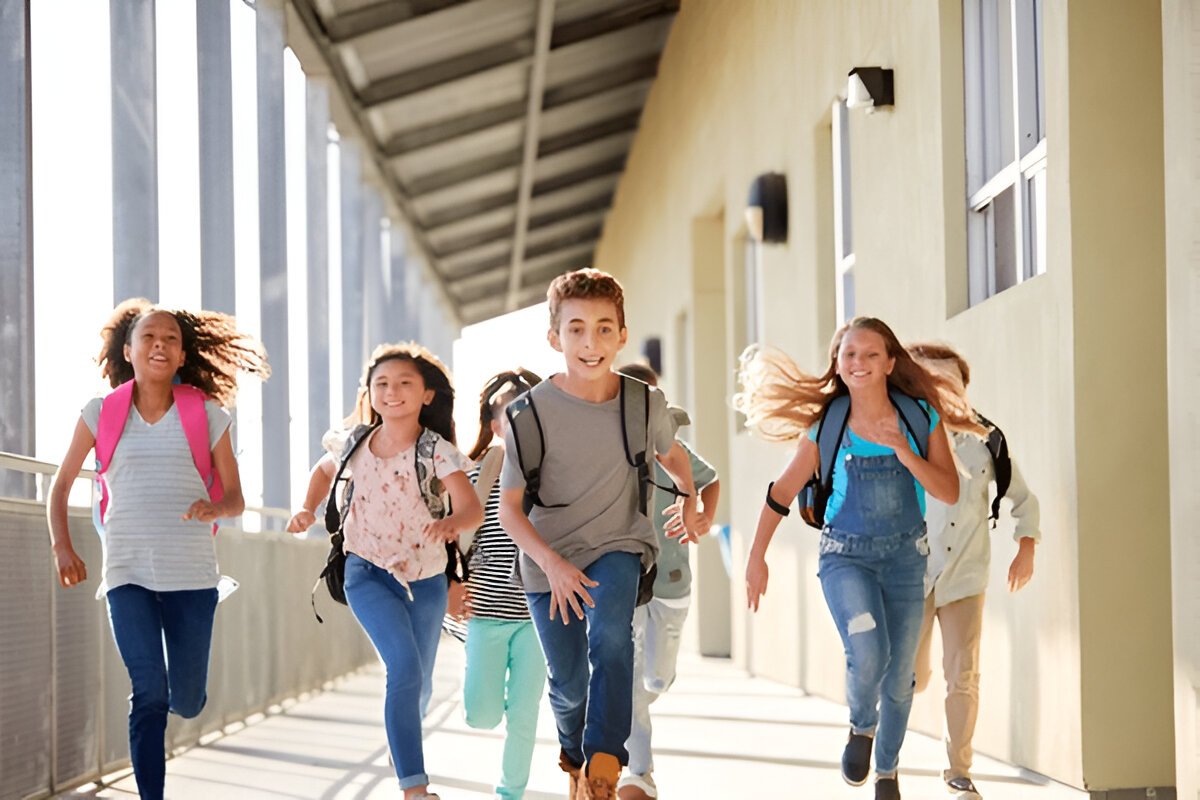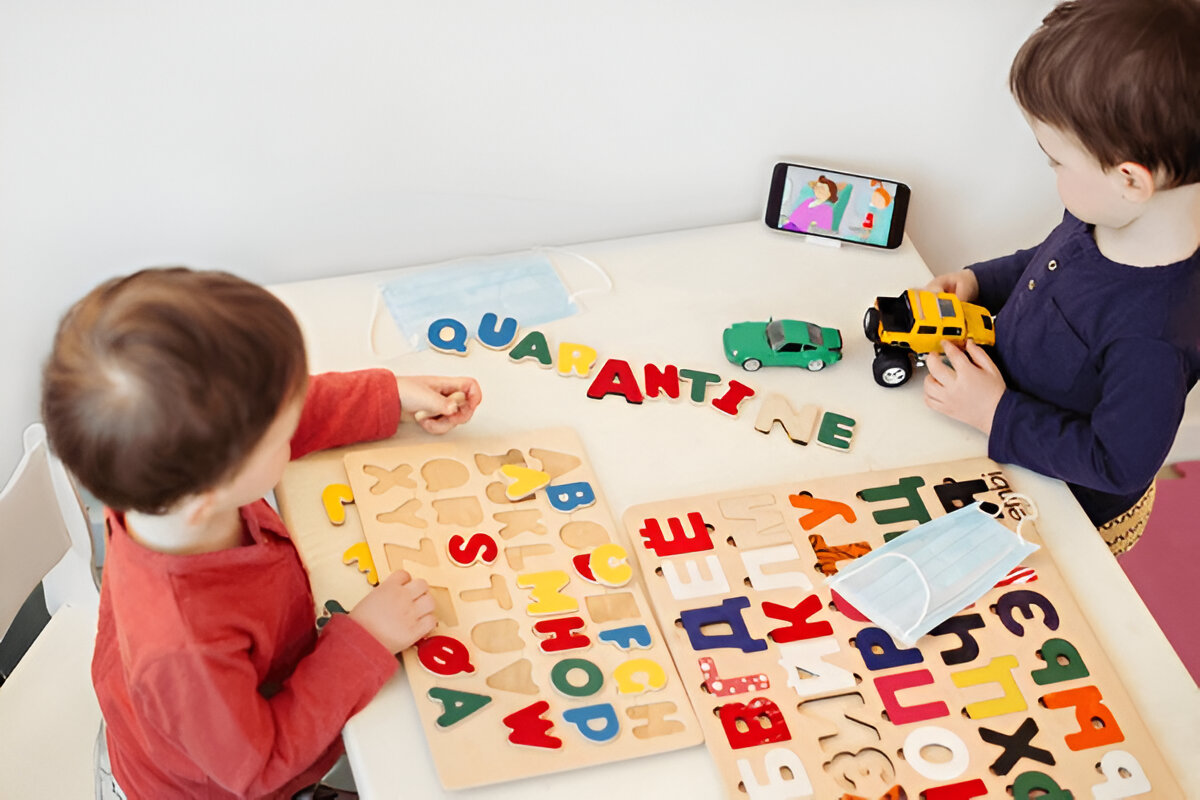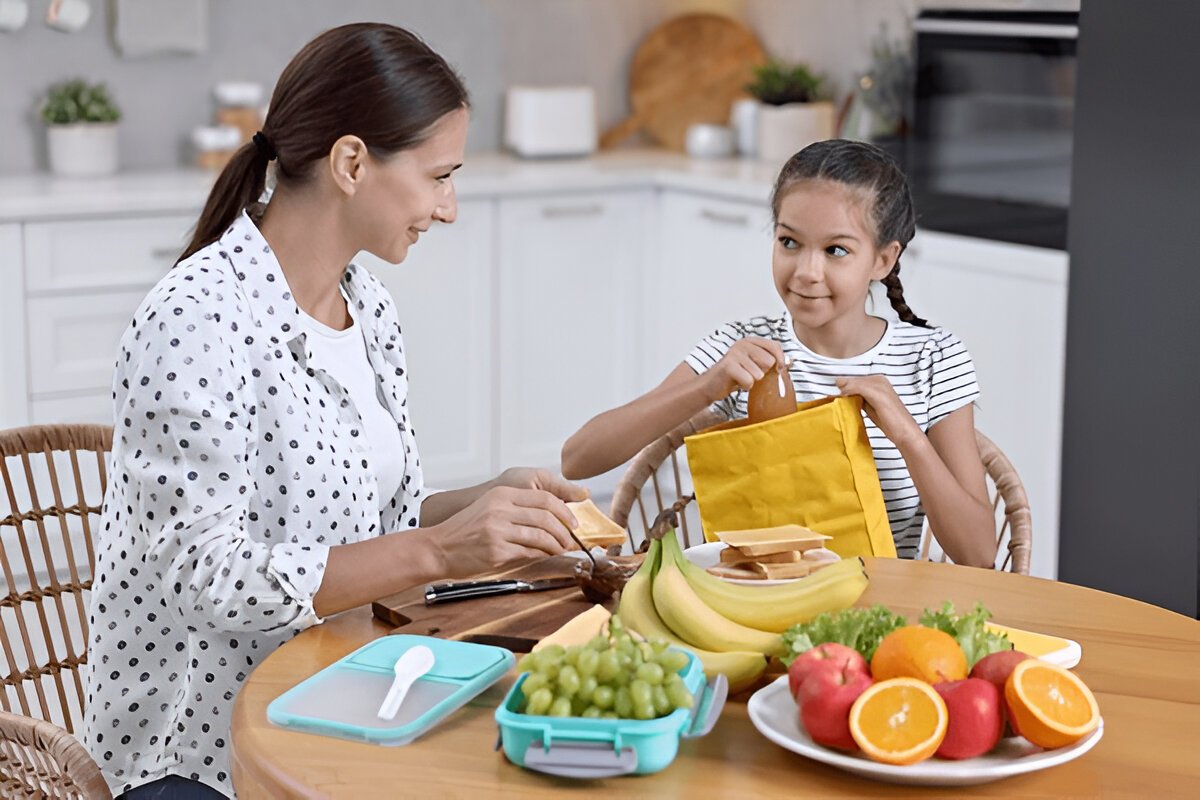You were holding a baby and you were completely mesmerized by their every little move. The first roll, the first wobbly sit up, the first shaky steps, there were so many amazing firsts! Then in the blink of an eye, you’re packing a lunch box, waving goodbye and watching them run in the school gates.
The school-age years (about 6-12) have a different kind of magic and physical milestones. There are considerably fewer big, dramatic firsts, even though the growth is still pretty amazing. A constant, controlled ignition is happening to create a more coordinated, capable and independent little person. Yet as a parent, it is easy to get caught up in the shoulds. Shouldn’t they ride a bike by now? Is it weird that they’re still kind of awkward and clumsy?
Let’s take a breath. We will use this guide to help you understand the physical milestones for school age children. It is not a stressful checklist. It is a friendly map to help you understand and appreciate the wonderful journey your child is taking. We will define milestone, risk factors for delayed physical milestones, the key indicators for a child’s physical development, how to encourage physical development, and what physical milestones your child may be working on in their school age.
What Are Developmental Milestones, Really?

Before we review the physical milestones for school age period, let’s clarify the term. Developmental milestones are just functional abilities that most children will achieve by a particular age. You can think of developmental milestones like mile markers when you are traveling towards your final destination for development. They indicate where doctors and the parents can assess how a child is developing in areas of importance.
Physical Milestones
Involve both large (gross motor) movements like crawling or walking and small (fine motor) skills such as grasping objects, drawing, or buttoning a shirt.
Cognitive Milestones
Relate to how children think, learn, and solve problems, including skills like recognizing shapes and colors, remembering facts, or working through simple puzzles.
Social and Emotional Milestones
Include how children interact with others, express and understand feelings, share, cooperate, and communicate effectively with family and peers.
Important Note
Every child develops at their own pace. Milestones represent an average range, not a strict schedule variation in the timing is completely normal and expected.
The Broader Journey: The 7 Stages of Physical Development
Your growth from a school-age child is part of a much bigger story. To know where your child is, it helps to know where your school-age child has been. Experts will usually describe physical development as a series of key stages. We provide a simplified view of development through the life span from birth to the adolescent stage.
Infancy (0–1 year)
This is the fastest period of growth. Babies learn to lift their heads, roll over, sit, crawl, and eventually stand and walk. They also develop basic fine motor skills, like grasping objects.
Toddlerhood (1–3 years)
Toddlers refine their walking and start to run, jump, and climb. Their hand-eye coordination improves, allowing them to stack blocks and use a spoon.
Preschool (3–5 years)
Gross motor skills become more advanced. Preschoolers can hop on one foot, ride a tricycle, and throw a ball overhand. Fine motor skills allow for drawing shapes and using scissors.
Early School Age (6–8 years)
Children’s movements become more fluid. They gain strength, balance, and coordination, enabling activities like riding a two-wheeler and playing organized sports.
Middle School Age (9–12 years)
Kids continue to refine skills, building more muscle and endurance. Puberty often begins in this stage, bringing significant physical changes and growth spurts.
Early Adolescence (13–15 years)
The growth spurt is often in full swing. Teens gain significant strength and coordination, which can sometimes feel awkward as their bodies change rapidly.
Late Adolescence (16–18+ years)
Most teens have completed puberty by this stage. Their physical growth slows down. They have reached their full adult height and have mature motor skills.
Development Progression
Each stage builds on the last. The running and jumping of a seven-year-old are built upon the wobbly first steps of a toddler.
The Early School Years (Ages 6-8): Building the Foundation
This is the time of limitless energy. They run, they hop, they climb, they do it all at once. Sometimes it might be exhausting just to watch, but their constant motion is important. They are now continually developing gross motor skills they started as toddlers. They are building their bodies and developing their strength and coordination each day.
Gross Motor Skills: Mastering the Big Movements
Gross Motor Skills Overview
In these years, large muscle development in the arms, legs, and torso accelerates. Children show remarkable progress in agility, strength, and movement control.
Balance and Coordination
Children now master their center of gravity walking on curbs like balance beams, hopping on one foot for extended periods, riding two-wheeled bikes, skipping, galloping, and quickly changing directions while running become part of their skillset.
Ball Skills
Throwing and catching become more intentional and coordinated. Children catch smaller balls from a distance, dribble a basketball with growing control, and their more fluid running makes organized sports like soccer more accessible.
Strength and Play
Improved strength and stamina allow children to hang on monkey bars longer, climb playground structures with confidence, and enjoy more energetic play. Overall physical endurance increases noticeably.
Fine Motor Skills: The Power of Precision
Fine Motor Skills Overview
These skills use the small muscles of the hands and fingers. They are vital for school tasks and daily independence, impacting activities from writing to dressing.
Handwriting and Drawing
Handwriting becomes smaller and neater. Children stay within lines when coloring, draw detailed pictures of people, and can copy complex shapes like diamonds.
Daily Life Skills
Children master tying shoelaces, use a knife and fork properly, button shirts, and manage zippers confidently boosting their independence and self-esteem.
Crafts and Building
They construct intricate Lego designs, use scissors for complex shapes, and show strong hand eye coordination with crafts and model building.
The “Tween” Years (Ages 9-12): Honing Skills and Building Strength
As they transition into the pre-teen phase of life, you’ll see a change. They still have raw energy, but it has more direction. They are not just moving around to move but building specific skills and interests. Hobbies, sports, often begin here. It’s a new chapter in the physical milestones in school age.
Advanced Motor Skills and Endurance
Strength and Stamina
Children can now run for longer distances and ride bikes for miles. Their muscles are stronger, and endurance is higher. Encourage activities like soccer, dance, swimming, or martial arts. Bodies are ready for more sustained exertion and fun.
Mastering Complex Movements
The coordination once newly developing is now second nature. Kids can combine skills, run and kick, catch and throw, or dance and spin. Sharper hand-eye coordination is seen in sports and even video game skills.
Sports-Specific Skills
If participating in sports, children show more specialized abilities. Basketball players develop reliable shots, dancers demonstrate precision, and swimmers achieve efficient strokes, thanks to enhanced strength and motor control.
The Onset of Puberty and Growth Spurts
Early Signs of Puberty
At this point, children may begin to see early signs of puberty, which will follow a whole new set of physical changes. Girls sometimes begin earlier than boys.
Growth Spurts
A child could grow several inches in one year when this happens, they could feel exhibitionist at that time. They may appear clumsy again with a completely new center of gravity and awkwardness, which is a natural adjustment for their body.
Changing Bodies
This may be a good time to have an open discussion about their changing bodies and explore the normalcy of what they are experiencing and promote body positivity during this sensitive time.
Your Role: How to Support Healthy Physical Growth
Let Children Progress at Their Own Pace
Parents often tend to evaluate their kids against their peers. We need to understand that all children progress at their own pace. We have a role to support their natural development, not push them.
Have Fun
There is no better way to support physical development than to make it fun. Play with your kids. Take walks, have dance parties, and allow them to get messy outside. Fun will go a long way – it is the best motivator.
Encourage Different Activities
Don’t just focus on one sport. Through encouraging participation and exploration of a mix of different activities we will build a wider range of skills. Climbing develops strength, dancing develops balance, swimming develops endurance.
Provide a Well Balanced Diet
Growing bodies need good fuel. Proper diet which allows for variety of fruits, vegetables, lean protein and whole grain will ensure good muscle growth and a steady source of energy.
Make Sure They Get Enough Sleep
Growth hormone is released in our bodies primarily during sleep. Typically, children 6 to 16 years old need 9 to 12 hours of sleep per night in order to grow and develop optimally.
Trust Your Belly
You know your child best, if you have genuine concerns, do not be afraid to talk to your paediatrician. They can often reassure you or provide advice for when things do not go quite right.
When to Talk to a Doctor
When to Seek Advice
While variation is normal, certain signs might warrant a conversation with a professional.
Losing Previously Gained Skills
If your child seems to be losing skills they once had.
Clumsiness or Poor Coordination
If they consistently seem much more clumsy or uncoordinated than their peers.
Favoring One Side
If they strongly favor one side of their body.
Persistent Pain
If they complain of persistent pain during physical activity.
Seeing the growth of our children is a privilege. We have the opportunity to sit front row at the greatest show. Let’s witness the “is” rather than worry about the “shoulds”. Let’s celebrate the scrapes, the stumbling on their bikes, and their unending energy while observing their physical milestones in school age. Because before we know it, we will blink again, and they will be fully grown. Check out Kinzy Club Blogs for more such helpful articles.
Also do check our Kinzy App to create fun memorable stories through our advanced Ai assistant with your kids.




